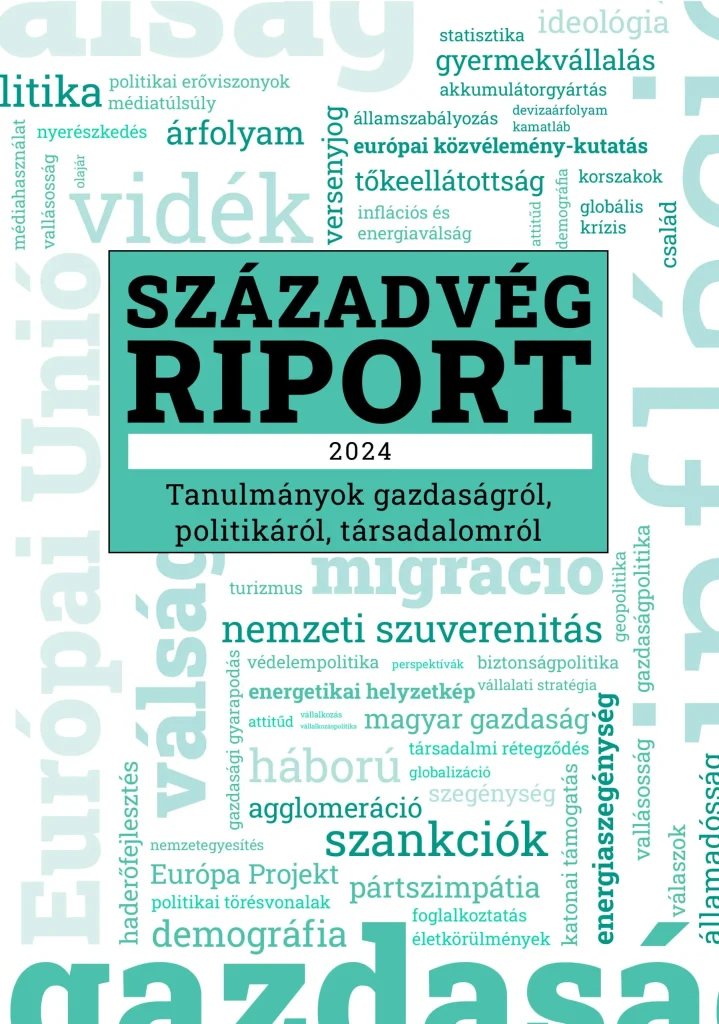The prosperity index remained in negative territory, determined by the uncertainty generated by the prolonged Russia-Ukraine war and the economic sanctions. A major improvement in economic expectations is likely to occur if the war ends, inflation remains in the central bank’s target range (between 2% and 4%), the interest rate environment becomes more favourable, the European economy strengthens, and energy markets sustain low prices.
Three sub-indices of the household prosperity index strengthened, and one sub-index weakened slightly in September compared with the previous month. Employment continued to be the most positively assessed, although falling from -1.9 in the previous month to -2.1, while perceptions of the economic environment went from -26.1 in the previous month to -22.0 in September, and the inflation perception sub-index went from -63.3 to -53.8. Meanwhile, the perception of financial situation also continued to improve from -9.9 to -8.7.
The September 2025 household prosperity survey found a significant positive shift in households’ inflation expectations compared to expectations, in August.
When asked, “What do you think the average inflation rate will be in the next year?”, respondents gave more favourable answers in September, close to the central bank’s target. The central bank’s tolerance band (price inflation between 2% and 4%) was mentioned by 20.2%, while 20.7% of respondents mentioned price changes between 4% and 5% (after 17.3% in August), and 13.0% (0.3 percentage points less than in the previous month) mentioned an inflation rate between 5% and 6%. Overall, 8.3% of respondents (+2.1 percentage points) predicted an inflation rate of less than 2%, 7.1% (−0.5 percentage points) predicted a rate of between 6% and 7%, while 25.6% (+5.7 percentage points) predicted inflation of more than 7%.
Looking at households’ sense of prosperity by age group, an improvement in two of five categories is apparent. We measured an outstanding, 10.3 index point increase in the 50-59 age group and a 3.3 index point increase in those aged 60 and over. While we detected a decline of 0.2 index points among 30-39 year olds, 0.4 index points, i.e. a virtual stagnation, among 40-49 year olds, and 2.0 index points among 18-29 year olds. Thus, the perceived prosperity is strongest among those aged 60 and over, with an index of -7.6, while it is weakest among 40-49 year olds, whose perceived prosperity stands at -18.5.
In the business survey, three sub-indices rose, while one sub-index fell in September. The business environment sub-index improved from -22.6 to -21.4, the economic environment sub-index from -29.0 to -28.6 and the production environment sub-index from -11.0 to -10.3 index points. The industrial environment sub-index fell from -1.5 in the previous month to -2.5.
The largest positive change in September 2025 was the positive development of companies’ future investment plans.
When asked, “How likely do you think your company will be able to make investments in the next year?”, company executives gave more favourable responses overall in September than in their August forecasts. This month, 9.9% of companies said they would definitely invest, up from 9.7% in August. Over the next year, 11.5% of respondents (+2.5 percentage points) are likely to invest. 10.9% (+1.9 percentage points) said they would rather invest. 10.1% (+0.3 percentage points) said they would rather not invest, 16.5% (+1.7 percentage points) said they probably would not invest, while 38.9% (−7.0 percentage points) of respondents said they would definitely not invest in the coming year.
Looking at the breakdown of companies by sector, it can be seen that, on average, the sense of prosperity improved in three and worsened in two. This month, we measured a +1.0 index point increase in industry, a +0.7 index point increase in trade, and a +1.2 index point increase in services, while we observed a −1.2 index point decrease in agriculture and a −3.8 index point decrease in construction. In September, the best sense of prosperity was measured in agriculture (-14.0), while the weakest in construction (-17.5).
The purpose of the prosperity survey conducted by Századvég Konjunktúrakutató is to provide information to decision-makers and analysts on current and near-term economic developments. Since August 2019, our Institute has been producing the business and consumer prosperity index on a monthly basis. Our monthly survey asks 1,000 business leaders and 1,000 adult residents about their assessment of the economic situation and their expectations. For the two groups, we ask 29 and 28 questions respectively, covering a wide range of economic life. Among the responses received, positive ones (e.g. expected economic improvement) are given a positive score, while negative ones (expected decrease in employment) are given a negative score. The scores are then averaged and converted to a scale between -100 and +100 to obtain the prosperity indices. Thus, the higher the value of the prosperity indices, the more positive households’ and companies’ perception of the economy is. In addition, for both the household and the business survey, 4 sub-indices are constructed using a subset of the questions to illustrate the evolution of economic sentiment in a particular area.
